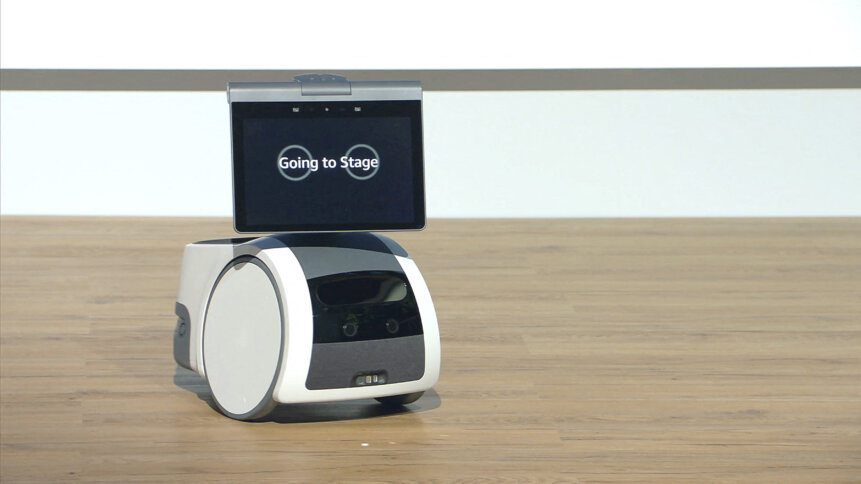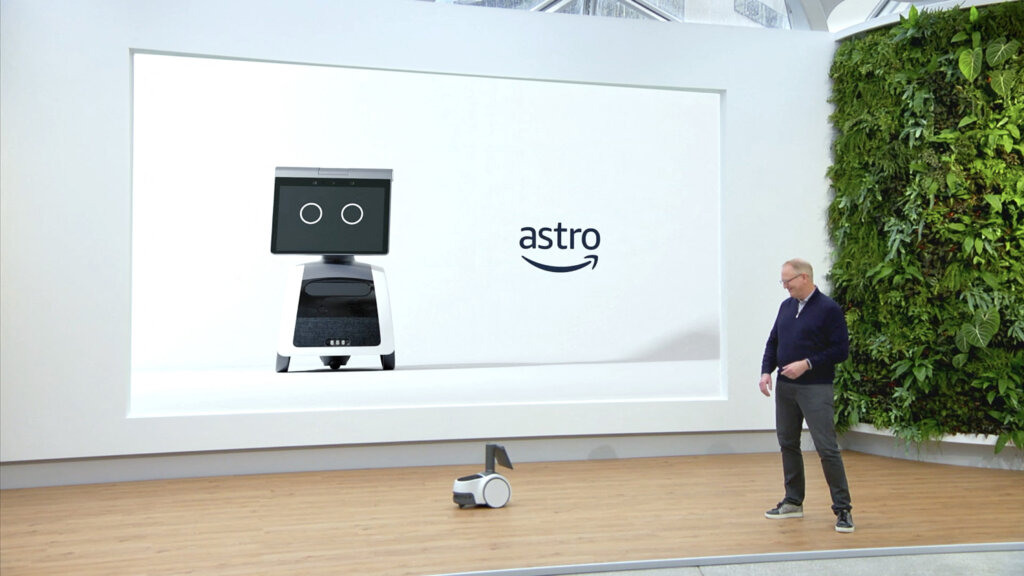The robot home invasion is official, as Amazon unveils Astro

Robots are quickly becoming an integral part of homes and Amazon is ensuring this continues as well. While there have been increasing robotic use cases for enterprises in various industries, having a robot at home would only see the ideas of a smart home become a reality.
Today, most smart homes are already heavily connected through various IoT devices that enhance living experiences. And AI has only made these devices better in smart homes — is there anything left to do except introduce robots into the home who can tap into the AI?
It’s one thing about using robots in businesses to ease workloads. Businesses have benefited tremendously as robots have increased productivity over the years. And with the pandemic enforcing remote work, more robotic technologies were required to ensure productivity was not interrupted.
However, to have a fully connected robot at home, that will be able to observe and process everything that is happening at home, some privacy concerns are definitely raised. In the past, certain IoT devices like smart audio devices were reportedly able to spy and listen in on conversations that are happening at home. Despite such concerns, the average consumer would still be enamored by the latest smart home innovations — which is why IoT systems and smart devices like Alexa virtual assistants continue to be in demand.
As such, Amazon has introduced Astro, the first robot for homes. According to a blog post by Charlie Tritschler, VP of Products at Amazon, Astro is a new and different kind of robot. It’s designed to help customers with a range of tasks like home monitoring and keeping in touch with family members.
Looking like a small dog on wheels, Astro taps new advancements in artificial intelligence, computer vision, sensor technology, and voice and edge computing. One of the use cases of Astro is to keep homes safe. The robot can move autonomously around homes, navigate to check in on specific areas, show users a live view of rooms via the Astro app. It can even send alerts if it detects an unrecognized person.
Astro also has sensors that can also detect the sound of a smoke alarm, carbon monoxide alarm, or glass breaking, and send an alert to users. Its periscope camera also provides a holistic view of the home. The robot is also connected to several Amazon applications, such as Alexa Together and Ring Contact Pro, enabling users to make the most of the services available to them.
Tritschler explained that Astro uses its digital eyes on its rotating screen, body movements, and expressive tones to communicate. He added that Astro’s personality not only helps it communicate intent and offer delightful experiences, but it also surprisingly evokes emotions like empathy when people use the device.
“In testing, we’ve been humbled by the number of people who said Astro’s personality made it feel like a part of their family, and that they would miss the device in their home after it was gone. That kind of connection is rare with consumer electronics, but we hope it will be commonplace with Astro and other future robots in the home,” commented Tritschler.

(Photo by Jamie McCarthy / GETTY IMAGES NORTH AMERICA / Getty Images via AFP)
Is Astro a privacy infringement in waiting?
Acknowledging that strong security features and privacy controls need to be foundational to Astro, Tritschler explained that Astro is built with multiple safety features, and layers of privacy and security to keep users in control of the experience, and keep their data safe.
Some of the features include on-device processing. Astro will be able to handle data processing on the device without the need to transmit data anywhere else. Visual IDs are stored on the device and Astro uses on-device processing for recognition.
Users can also control the movements of Astro and restrict certain areas that may infringe privacy. Astro also has microphones/cameras-off buttons users can press whenever they want to turn off cameras, mics, and motion. When this button is pressed, Astro cannot move or capture video or audio, and a dedicated red LED is illuminated to match the red status indicator on the screen.
LED indicators also come on when it is streaming video or audio to the cloud. For example, the indicator light on top of Astro’s periscope will turn green whenever a video is streamed to the cloud, like when live view is in progress.
YOU MIGHT LIKE

If robots are taking your job, should they pay tax?
With these features built-in, users may just feel a bit secure when using Astro. However, it is also important to remember, that Astro is a robot and a connected device. Meaning, it is still vulnerable to being compromised by cybercriminals.
At the end of the day, users would have to be mindful of how they use Astro at their homes. Amazon has not announced a release date for the robot but said it will be granting invitations later this year.









